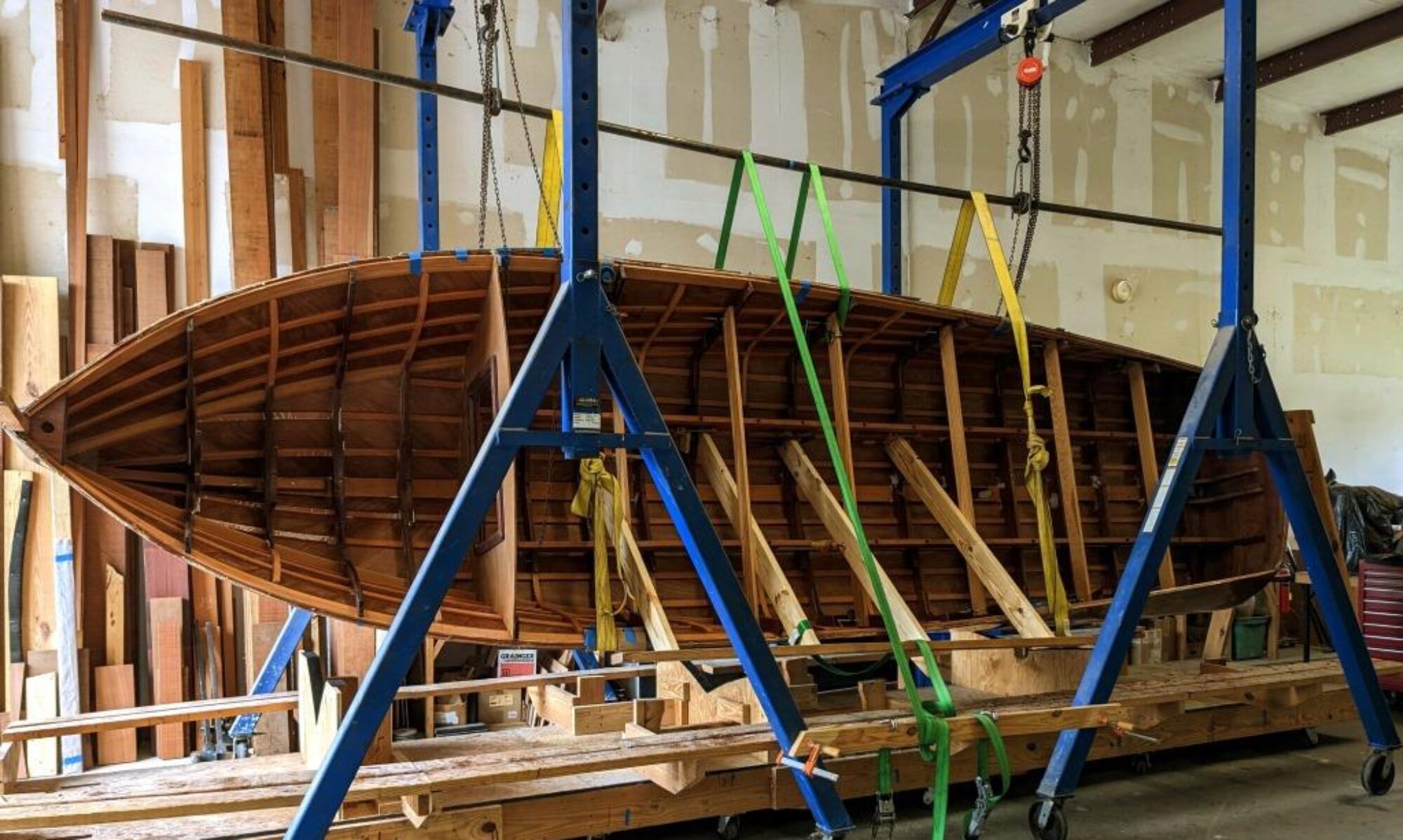
Once you have the frames made, you have to set them up in the right position. Oddly enough, this process is called “Setting up”. (See, there are actually some terms in boatbuilding that are self-explanatory!) The primary thing is to get the frames secured exactly the correct distance from each other and at the proper level. You do this by using guidelines that you’ve transferred from your patterns and lofting to the frames themselves. For instance, you draw the center line on each frame, and align it under a string line on your strongback. Also, you can attach a cross spall to each frame at, say, the +24″ waterline. Then line these up as you erect the frames. Continue reading “Setting up the Palm Beach 22”












